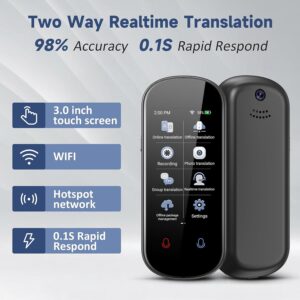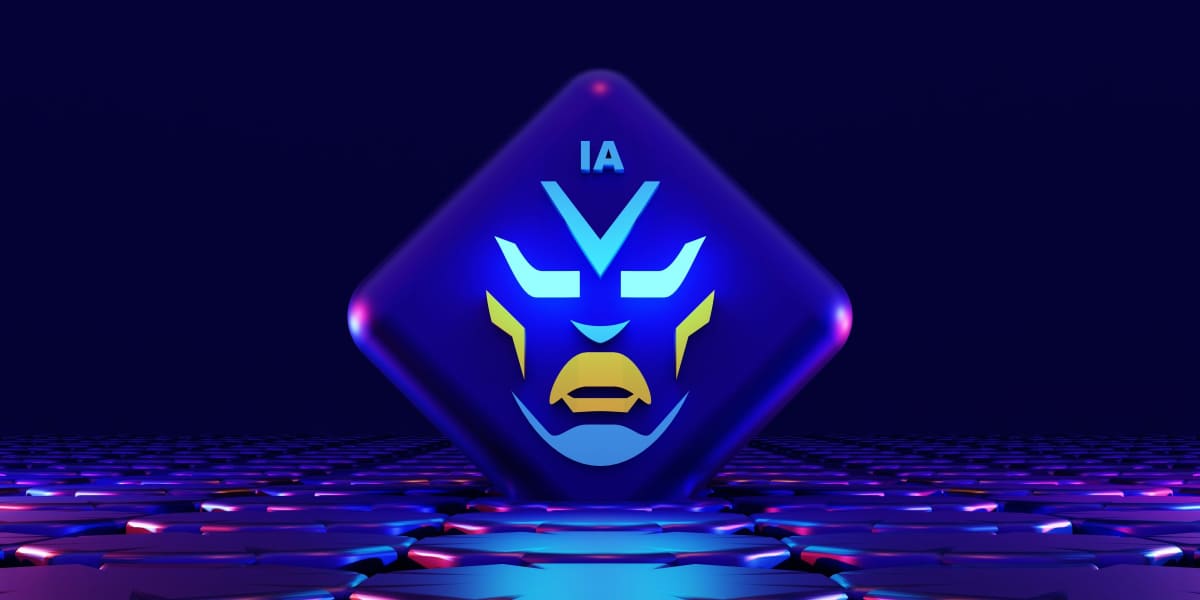Have you ever found yourself in a situation where you needed to communicate with someone who spoke a different language? It can be quite challenging and frustrating when language barriers prevent you from effectively understanding and being understood. But fear not, because there are now incredible AI machine translation tools that can help bridge those gaps for you. In this article, we will explore the best AI machine translation tools available that can help unlock content and overcome language barriers.
With advancements in artificial intelligence, machine translation tools have become more accurate and reliable than ever before. Whether you’re traveling to a foreign country, conducting business with international partners, or simply trying to understand a document in a different language, these AI language translation tools can be incredibly useful. They utilize powerful algorithms and linguistic analysis to quickly and accurately translate text or speech from one language to another. In our upcoming article, we will dive deeper into the different features and functionalities these tools offer, as well as their pros and cons. So, stay tuned and get ready to discover how machine translation tools can revolutionize your ability to communicate globally.
Introduction
Language barriers have long been a hindrance to effective communication, both in personal and professional settings. Fortunately, advancements in technology have given rise to machine translation tools that can bridge these gaps and facilitate seamless interaction between individuals speaking different languages. In this article, we will explore the impact of language barriers on communication, the challenges faced in overcoming them, and the need for effective machine translation tools to overcome these barriers.
Understanding Language Barriers
The impact of language barriers on communication
Language barriers can significantly impact communication in various ways. Firstly, they impede the exchange of ideas and information, as individuals speaking different languages struggle to understand each other. This can lead to misunderstandings, misinterpretations, and even conflicts. Secondly, language barriers hinder collaboration and cooperation, particularly in multicultural workplaces and international business settings. Effective communication is essential for building trust and establishing fruitful relationships, and language barriers can hinder this process.
Challenges faced in overcoming language barriers
Overcoming language barriers is no easy task. The most apparent challenge is the lack of a common language between individuals. This forces them to rely on translators or resort to alternative means of communication, such as gestures or visual aids. However, relying on human translators can be time-consuming, costly, and may not always be available in every setting. Additionally, cultural and contextual differences further complicate the process of overcoming language barriers, as language is deeply intertwined with culture and social norms.
The need for effective machine translation tools
Effective AI translation tools play a vital role in overcoming language barriers and enabling effective communication. These tools utilize artificial intelligence and natural language processing to translate text or speech from one language to another accurately and efficiently. By leveraging these tools, individuals can communicate in their native languages while understanding and being understood by others speaking different languages. This not only facilitates better collaboration and understanding but also promotes inclusivity and diversity.

What are AI Machine Translation Tools?
Definition and purpose of machine translation
AI Machine translation involves the use of computer algorithms to translate text or speech from one language to another automatically. The purpose of AI translation tools is to bridge the gap between different languages and enable effective communication between individuals who do not share a common language. These tools can translate a wide range of content, including documents, websites, emails, and even live conversations.
How machine translation tools work
Machine translation tools employ complex algorithms and linguistic rules to analyze the structure, grammar, and vocabulary of a given text or speech. Initially, rule-based approaches were used, where pre-defined linguistic rules were applied to translate the content. However, these approaches often produced inaccurate translations, as they struggled to capture the nuances and complexities of different languages.
In recent years, machine translation has seen significant advancements with the introduction of neural machine translation (NMT). NMT utilizes artificial neural networks to process and learn from large amounts of bilingual data, enabling more accurate and natural-sounding translations. NMT models can process entire sentences or paragraphs at once, taking into account the context and generating translations that are contextually appropriate.
Different types of machine translation tools
There are various types of machine translation tools available, each catering to different needs and preferences. Statistical machine translation (SMT) tools rely on statistical models and the analysis of bilingual corpora to generate translations. This approach is effective but may lack the naturalness and accuracy of NMT. Rule-based machine translation (RBMT) tools utilize pre-defined linguistic rules and dictionaries to translate content. While these tools offer greater control over the translation process, they often struggle with nuances and idiomatic expressions.
Advantages of Machine Translation Tools
Improved communication across language barriers
The most significant advantage of AI translation tools is their ability to facilitate communication between individuals who do not speak the same language. These tools eliminate the need for human translators and allow individuals to convey their thoughts and ideas in their native language. By removing language barriers, machine translation tools promote inclusivity and enable seamless interaction in various settings, such as international conferences, cross-border business negotiations, and even personal conversations.
Time and cost efficiency
Machine translation tools offer significant time and cost savings compared to traditional translation methods. Translating a document or communication manually can be a time-consuming process, especially when multiple languages are involved. Machine translation tools can process content within seconds or minutes, depending on the complexity and length of the text. Moreover, the cost of machine translation tools is often significantly lower than hiring professional human translators, making them a cost-effective solution for both individuals and organizations.
Enhanced accuracy and quality of translations
With advancements in NMT, machine translation tools have become increasingly accurate and reliable. While they may not always match the level of a professional human translator, they can generate translations that are understandable and contextually appropriate. Additionally, machine translation tools allow users to review and edit the translations, ensuring that the final output meets their specific requirements. This combination of speed, accuracy, and user control enhances the overall quality of translations and improves the user experience.
Top Machine Translation Tools in the Market
Google Translate
Google Translate is one of the most widely used machine translation tools. It offers translation services for over 100 languages, covering a vast majority of the world’s population. Google Translate’s interface is user-friendly, allowing users to input text manually or upload documents for translation. The tool provides both text and speech translation, with the ability to translate audio in real-time using the smartphone app. Although Google Translate may not always produce perfect translations, it is constantly improving and provides a solid foundation for basic translation needs.
Microsoft Translator
Microsoft Translator is another popular machine translation tool, offering translation services for over 60 languages. It integrates seamlessly with various Microsoft products, such as Office 365 and Skype, making it a convenient choice for individuals and organizations already using Microsoft’s ecosystem. Microsoft Translator provides both text and speech translation, with additional features such as live transcription and crowd-powered translations. The tool also offers customization options, allowing users to fine-tune the translations to match their specific requirements.
DeepL Translator
DeepL Translator, powered by deep learning algorithms, has gained recognition for its high-quality translations. The tool offers translation services for several European languages, including English, Spanish, French, German, Italian, Dutch, and Polish. DeepL Translator utilizes NMT technology to generate translations that are highly accurate and natural-sounding. The tool’s user interface is intuitive and straightforward, with a focus on providing an optimal user experience. DeepL Translator is particularly popular among professionals in fields such as content localization, marketing, and customer support.
IBM Watson Language Translator
IBM Watson Language Translator is a powerful machine translation tool that can process text in multiple languages. It leverages IBM’s advanced AI technologies, including natural language processing and deep learning, to deliver accurate and reliable translations. IBM Watson Language Translator offers customization options, allowing users to fine-tune the translations based on their specific domain or industry. It also supports a wide range of integration options, enabling seamless integration with various applications, platforms, and workflows.
Features to Consider in Machine Translation Tools
Language coverage and accuracy
When evaluating AI machine translation tools, it is crucial to consider the languages supported and the accuracy of the translations. Some tools excel in certain language pairs, while others may provide broader language coverage. Additionally, accuracy can vary depending on the technology used and the availability of bilingual data for training the translation models. Users should prioritize tools that offer accurate translations for the languages they require.
User interface and ease of use
A user-friendly interface is key to a positive user experience with machine translation tools. The tool should be intuitive and easy to navigate, allowing users to input, edit, and review translations effortlessly. Clear instructions, tooltips, and helpful prompts can help users maximize the tool’s capabilities without the need for extensive training or technical knowledge.
Integration with other platforms and applications
Integration capabilities are essential for seamless workflows and increasing productivity. Machine translation tools that can integrate with popular applications, content management systems, or communication platforms allow users to translate content directly within their familiar environments. This eliminates the need for manual copying and pasting, streamlines the translation process, and ensures consistency across different platforms.
Customization and learning capabilities
Tools that offer customization options enable users to adapt the translations to their specific needs. This is particularly beneficial for industries with specialized terminology or jargon. Machine translation tools that provide customizable translation models or the ability to “train” the tool based on user feedback can improve the accuracy and relevance of translations over time.

Using Machine Translation Tools Effectively
Understanding the limitations of machine translation
While machine translation tools have come a long way, it is important to recognize their limitations. Machine translation may not always capture the nuances and idiomatic expressions specific to each language. Cultural and contextual differences can also impact the accuracy and appropriateness of translations. Users should be aware that machine translation is a valuable tool to facilitate communication, but it is not a perfect substitute for human translation in certain complex or sensitive content.
Proofreading and editing machine-translated content
To ensure accurate and high-quality translations, it is recommended to review and edit the machine-translated content before finalizing it. Proofreading the translations helps catch any errors or awkward phrasings that might have been generated by the machine translation tool. This additional step ensures that the final output is clear, correct, and conveys the intended message accurately. Users should also consider seeking feedback from native speakers or professional translators to further enhance the quality of the translations.
Leveraging post-editing services
For more demanding translation requirements, post-editing services can be utilized. Post-editing involves the review and revision of machine-translated content by professional human translators. This ensures that the final output meets the highest standards of quality and accuracy. Post-editing services can be particularly useful for specialized industries or content that requires a high level of linguistic expertise. Although post-editing adds an additional cost, it guarantees the best possible translations for critical or sensitive materials.
Future Developments in Machine Translation
Advancements in neural machine translation
As neural machine translation technology continues to evolve, we can expect significant improvements in translation quality and accuracy. Ongoing research in AI and deep learning is driving the development of more sophisticated models that can handle complex linguistic structures, idiomatic expressions, and contextual nuances. These advancements will further enhance the reliability and naturalness of machine translations, bringing us closer to seamless cross-language communication.
Integration of machine translation with other AI technologies
Machine translation is a critical component of broader AI applications, such as virtual assistants, chatbots, and voice recognition systems. By integrating machine translation with these technologies, we can create more seamless and natural interactions for individuals speaking different languages. This integration holds great potential for improving customer service experiences, facilitating global e-commerce, and enabling smoother cross-border communication.
Potential impact on language learning and globalization
Machine translation tools can greatly impact language learning and cultural exchange. As these tools become more accessible and accurate, individuals wanting to learn a new language can leverage them to gain exposure to authentic content in the target language. This can enhance language learning outcomes and contribute to a more interconnected and global society. Additionally, machine translation can help foster cultural exchange and understanding by enabling individuals from different linguistic backgrounds to engage in meaningful conversations and share their perspectives.
Conclusion
Language barriers have long hindered effective communication, but AI machine translation tools are unlocking new possibilities for seamless cross-language interaction. These tools offer numerous advantages, including improved communication across language barriers, time and cost efficiency, and enhanced accuracy of translations. Leading machine translation tools such as Google Translate, Microsoft Translator, DeepL Translator, and IBM Watson Language Translator offer a range of features and capabilities to cater to different needs. By considering factors such as language coverage, user interface, integration options, and customization capabilities, users can find the best machine translation tool for their requirements. However, it is important to understand the limitations of machine translation, proofread and edit the translations, and consider post-editing services for critical or sensitive content. As machine translation technology continues to advance, we can expect even more sophisticated translations, integration with other AI technologies, and a positive impact on language learning and globalization. With the right machine translation tool, individuals and organizations can overcome language barriers and unlock a world of possibilities.

